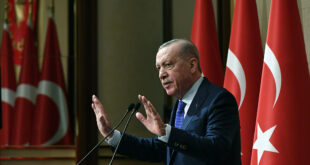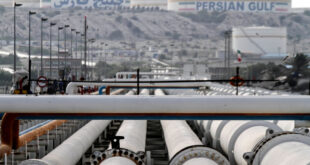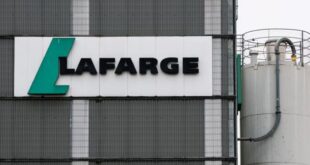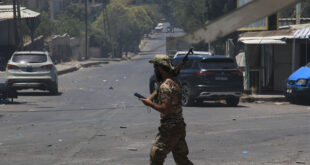The Uborak and Sutina massacres near Mostar were the first and the largest war crimes in the Herzegovina region during the 1990s conflict. In the first in a three-part series, eyewitnesses recall the executions that left 114 people dead.
On Tuesday February 2, 2010, at precisely 9.10am, a protected witness codenamed VS-1067 entered the courtroom at the International Criminal Tribunal for the Former Yugoslavia, ICTY in The Hague, where Serbian Radical Party leader Vojislav Seselj was being tried.
Seselj was being prosecuted for crimes against humanity and war crimes that had been committed in various regions of Bosnia and Herzegovina, Croatia and Serbia between 1992 and 1995. Among these crimes were massacres in Uborak and Sutina, two locations north of the city of Mostar in the Herzegovina region, where 114 civilians were executed on June 13, 1992.
The 1992 violence in Mostar is relatively unaccounted for in the larger narrative of the conflict in Bosnia and Herzegovina. Very little has been written about it, very little has been researched, and almost no one has ever been prosecuted. Although the two-month siege of Mostar led by Yugoslav People’s Army, JNA general Momcilo Perisic left the city devastated, this destruction was not included in Perisic’s indictment when he was prosecuted at the ICTY.
The work of the ICTY has helped to establish facts, chronologies and who was responsible for crimes during the war in Bosnia and Herzegovina. Testimonies given to the tribunal can also establish details about lesser-known events, like the massacres in Uborak and Sutina.
The testimony of witness VS-1067 revealed completely overlooked aspects of the violence in the Herzegovina region. VS-1067 appears to have been a JNA soldier stationed in Mostar, where he was born. During his testimony, he showed that he knew the city and its surroundings well, as well as many locals involved in the events and crimes about which he was testifying. He cited them by their names and professions, sometimes even adding a personal anecdote.
What can be learned from his testimony is that despite the fact that the armed conflict in Bosnia and Herzegovina officially started in the spring of 1992, the year 1991 had already brought a lot of changes in the lives of Herzegovinians with the arrival of approximately 30,000 JNA reservists in the area around Mostar and the use of its local airbase in the JNA’s attacks on the Croatian coastal city of Dubrovnik.
In October 1991, the JNA, on the way to besiege Dubrovnik, also attacked the village of Ravno in Herzegovina and completely destroyed it. The village’s population, mostly composed of Croats, was either killed or deported to the town of Trebinje. This was the first act of war on Bosnia and Herzegovina’s soil, yet it remains largely unknown and is never described as the beginning of the war.
The destruction of Ravno highlights how the situation in Herzegovina was deteriorating, with roadblocks set up and tensions increasing between the local Croat population and the Croat militias and the Serbian-controlled JNA.
In his book Mostar: Dolazi Rat (Mostar: War is Coming), Roko Markovina extensively describes the atmosphere in the autumn and winter 1991 in Mostar and the multiple meetings between representatives of all political parties of the city and the military authorities. Practically all the meetings were about the tensions between the local population and the JNA reservist troops, and the security problems provoked by the reservists who were increasingly putting pressure on civilians and threatening them.
Civilians were afraid of the new reservists because they looked and acted like they were out of control. Markovina’s book and VS-1067’s testimony describe them as dirty, with long beards, and often drunk and rude.
These ‘out of control’ reservists were JNA men who were loyal to Vojislav Seselj. Little by little they imposed their authority on Mostar, which, as early as the end of 1991, was in a chaotic situation, according to VS-1067, and was semi-occupied by the JNA.
By spring 1992, the situation had deteriorated even further. VS-1067 said that by this point there were now snipers in the Razvitak supermarket near Mostar’s central Musala Square, from where almost the entire city can be seen. The witness stressed the contrast between the situation inside Mostar, where chaos reigned, and outside it, where JNA general Perisic maintained the discipline of his troops and where the situation seemed under control, even if tense.
Clashes between Croatian Defence Forces, HOS paramilitaries and the JNA were more and more frequent, while local members of Radovan Karadzic’s Serb Democratic Party, SDS had built barricades at the north entrance to the city. On April 3, 1992, a truck exploded in front of the JNA’s North Camp in Mostar, causing a lot of damage, particularly in the Zalik neighbourhood on the other side of the road.
After exiting the Salakovac tunnel from Sarajevo, a vast view of the Neretva valley unfolds as the road leads onwards to Mostar, via Potoci, Bjelo Polje, Vrapcici, Uborak, Sutina, and finally Zalik at the very entrance to the city.
The Djuro Salaj cotton factory was located in Vrapcici, amid these agricultural lowlands. A significant number of inhabitants of the nearby villages and neighborhoods were employed by the factory, which had also contributed to the building of a lot of the housing in the area.
The factory was partly transformed into a prison in the spring of 1992. Immediately after April 3, the new JNA reservists stationed in Mostar started to round up non-Serb civilians, while outside Mostar, in Western Herzegovina, which was under the control of the HOS and the Croatian Defence Council, HVO, Serb civilians started to be deported, arrested or interned in various prisons and camps. Among these camps was the Dretelj detention camp, where the HVO would start interning, torturing and killing Bosniak and Serb civilians a year later.
As witness VS-1067 explained in his testimony, tensions between the Croat militias and JNA rose even further after Perisic started to methodically bomb Mostar. For two months, the JNA and the newly-formed Army of Republika Srpska, VRS targeted civilian housing, infrastructure, religious buildings and bridges. Civilians started to hide in basements and nuclear shelters from the beginning of April.
Witness Redzep Karisik explained in his testimony at Vojislav Seselj’s trial at the ICTY in 2008 that civilians were arrested, and men taken to clean up roads, pick up garbage and look after trenches. Karisik also said there were bodies in the middle of Tito Street, the main road in the eastern part of the city, which by this time was controlled by JNA reservist troops and Serb militia members loyal to Seselj.
Witness VS-1067 described looting, beatings and rapes all over the eastern part of Mostar, which was controlled by Serb extremists over whom the JNA seemed to have no authority.
After two months of occupation and shelling, the JNA prepared to retreat from the Mostar area and cede its weapons to the newly-established Army of Republika Srpska. By this point, Mostar was a severely damaged city. All its bridges over the Neretva river had been destroyed apart from the landmark Old Bridge, which had suffered damage. Mostar’s Old Town, mosques and various pieces of Ottoman heritage have been destroyed or damaged. Factories had been dismantled, infrastructure burned down. By June 1992, Mostar was already a shadow of its former self.
Bosnian Croat armed forces, which had now unified under a single commander, then launched Operation Chacal on June 7, 1992. The operation was destined to free all the roads around Dubrovnik and the rest of Herzegovina from the Serbs’ control. The part of the campaign aiming at freeing Mostar was called ‘June’s Dawn’, and Croat forces reached the city on June 11, 1992.
On June 13, VS-1067 returned from duty with a colleague to find much agitation at the North Camp, where JNA troops were based. A sabotage unit from the newly-formed Bosnian Army had tried to enter the premises, and the fighting was harsh, he told the ICTY. JNA soldiers and Seselj’s men then detained local civilians.
“A woman came up to me and said that they had taken her son away, Nedzad Benca, that they took him away, and that he was [detained] somewhere in the changing rooms [at the FK Lokomotiva football stadium] in Vrapcici. However, more and more people were coming there and saying that their husbands, children,etc had been taken away. Then, Borislav Janjic and I went to look for these people,” VS-1067 explained in his testimony.
Once VS-1067 arrived at the changing rooms at the little stadium in Vrapcici, he found many civilians detained there but no Nedzad Benca. One of the detainees explained to VS-1067 that one group of civilians had already been taken to a garbage dump in Uborak, a few kilometres away.
After a brief verbal altercation with members of Seselj’s Serbian Radical Party who acted as if they were in charge of the improvised detention site at the stadium, VS-1067 and his colleague drove to Uborak. There they found around 20 members of Seselj’s militia with 20 or so civilians.
As VS-1067 walked up to the group to check if Benca was among the civilians, a Serb militia member stopped him and told him: “You have no business being here.”
“As we were walking towards the car, they took them down into a valley… When we got to the car, we heard shooting. We got into the car and fled,” said VS-1067.
Among the civilians being held in the changing rooms at the FK Lokomotiva stadium in Vrapcici was Redzep Karisik, who had been transferred there from the Sutina cemetery administration building six days earlier. Karisik explained in his deposition to the ICTY that there were 37 men when he was taken to Vrapcici and that the number of detainees rose to 90, including women, over the course of six days.
The detention conditions were horrific, he testified. Judge Jean-Claude Antonetti, who presided over the Seselj trial, asked Karisik: “If I understand you well you drank once in four days and ate once in six days?”
On the night of June 13, 1992, at 10.30pm, a white van parked in front of the changing rooms and loaded up approximatively 20 people.
“We didn’t know where we were going. It wasn’t an asphalt road, it was a dirt road… Then, the van stopped. The man opened the door, and the people at the end started getting out. And as they were getting out, this man started shooting them down with bursts of fire,” Karisik said.
“I remember well one prisoner who got out said [to one of his captors], ‘Dragan, we know each other. We’ve known each other for 30 years.’ And he just shot him down.”
Karisik survived the massacre because he wasn’t able to stand up and get out of the truck. Brought back to the administration facilities of the Sutina Cemetery and handcuffed to a heater, he then managed to escape by breaking the handcuffs and getting out through a window.
On June 16, 1992, the first mass grave of the war in Bosnia and Herzegovina was found in a pit by the River Neretva, 150 metres away from the Sutina cemetery. It contained 26 bodies, which were immediately exhumed, thanks to a man called Admir Boloban, who had survived the shootings by hiding in the bushes by the river for several days and later alerted the police. On August 28, 1992, a second mass grave was exhumed at the garbage dump in Uborak. It contained 88 bodies.
The massacres in Uborak and Sutina were the first mass crimes of the war in Herzegovina, and these were first mass graves in the country. Karisik became a key witness, helping with identification of the victims and establishing and reconstitution of the facts. He would later give various interviews to journalists and testify against Seselj.
But Seselj was ultimately acquitted of bearing responsibility for the Uborak and Sutina crimes. Thirty years on, no one has been convicted of the killings, or the destruction of Mostar in 1992.
 Eurasia Press & News
Eurasia Press & News




